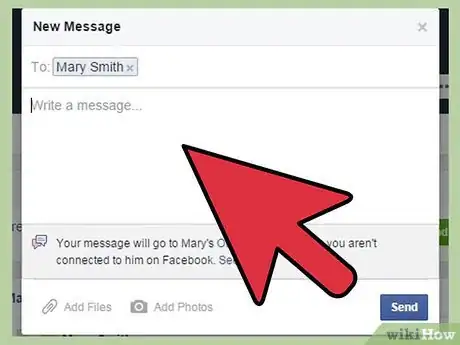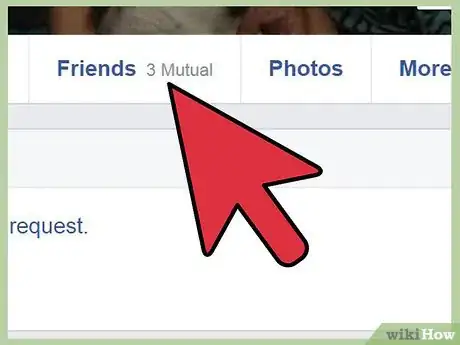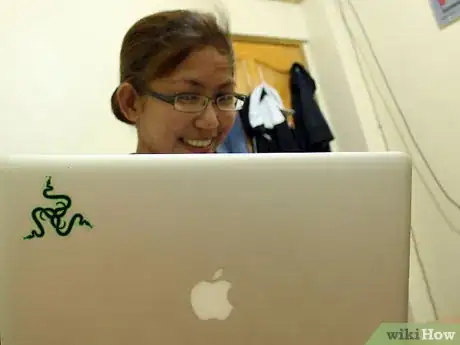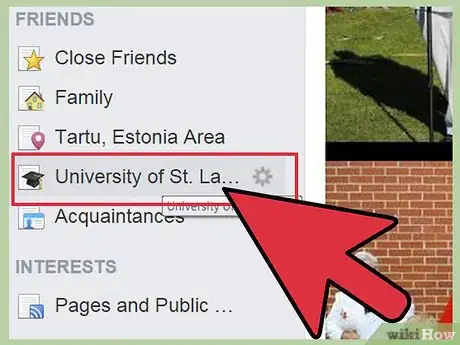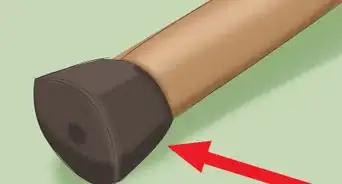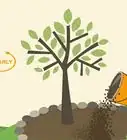wikiHow is a “wiki,” similar to Wikipedia, which means that many of our articles are co-written by multiple authors. To create this article, 43 people, some anonymous, worked to edit and improve it over time.
There are 10 references cited in this article, which can be found at the bottom of the page.
This article has been viewed 239,412 times.
Learn more...
Moving, major life changes, and the simple passage of time: there are lots of ways to lose touch with old friends. The good news is that in the internet age, it is easier than ever to find them again! This guide will give you tips on tracking down old friends online. Part I will give you instructions on conducting a basic internet people search, which should turn up results for most people. Part II will give you other methods to try if the person you are searching for is more difficult to find, as is often the case when a great deal of time has passed, or when people have changed their names due to marriage, etc.
Steps
Conducting a Basic People Search
-
1Brainstorm a list of information that you know about the person. The more information you have, the easier it will be to locate your friend. Think about when and where you knew the person, and who else you knew at the same time. Write down as many of the following pieces of information about the person as you can recall. It is not necessary to have all of this information, but the more you have to work with, the better your chances are of finding your friend.[1]
- First and last name.
- Middle name. This can be helpful if the person has a common name, or if your friend later switched to using their middle name.
- Approximate age and date of birth.
- Place of birth
- Schools attended, and years in attendance.
- Known employers, and years of employment.
- Military service information: unit served in, dates/locations of service, years active.
- Last known area of residence.
- The names of your friend’s parents, siblings, and/or other close relations.
- The names of other people who also knew your friend.
-
2Conduct a simple web search. Over the years, many different search engines have appeared that were dedicated to searching for people online; however few have stood the test of time, and many once –popular people-finder sites no longer maintain up-to-date records. That’s where trusty old Google comes in. Google searches include all sorts of news entries, the registries of many social media sites, including Facebook, Twitter, Instagram, and LinkedIn, phone directory information, etc., and is the best place to start, and usually end your search.
- Go to Google, or your search engine of choice. (Not all search engines do as well accessing various social media sites, so if the first search engine you try doesn’t give you the kinds of results you would like, try another.)
- Enter in the person’s first and last name and click the “Search” button, or hit the enter key.
- Scroll through the results and see if anything about your friend comes up.
Advertisement -
3Add information to your search. A lot of times, simply entering a person’s first name and last name won’t be enough to locate the person you are looking for. This is especially likely if the person has a very common name, like “Mary Smith”, so try adding in additional information to narrow down your search. Place quotation marks around the person’s first and last name to keep them together as a search term, and then try various searches that include additional information.[2]
- You might add a geographical location, and search for: "Mary Smith" Evergreen, WA.
- Try adding a school name, such as "John Jones" Remington High School Colorado.
- Try adding an employer name, such as "Rachel Roberts" Boeing.
- Keep experimenting like this for a while, chances are you will eventually hit on the right person.
-
4Search on Facebook. The next easiest way to track a person down is to use the social media site Facebook. [3] Facebook is especially useful because it allows people to record (and you to search for!) information about former schools, employers, etc. If you do not already have a Facebook account, it is best to set one up so that you will be able to contact your friend when you do find her. Be sure to include a photo so that your friend might recognize your message. Then enter the person’s name into the “Search Facebook” bar at the top of the screen, and begin scrolling through the list of names that pop up.[4]
- Facebook provides a lot of automated assistance in locating people and will take the information you have entered about your other friends, as well as your own employment and educational history to narrow down the list.
- Remember that Facebook gives its users the opportunity to keep their names from appearing in public searches, so often you can find people within Facebook that you could not find using a Google search.
- New social networking sites are always appearing, and you never know which one your friend might be using. If Facebook doesn’t turn anything up, try searching other sites like Google+, Ello, etc.
-
5Make contact. At this point, you will have hopefully found some contact information for your friend, or someone who you believe is likely to be your old friend. It may be an email address, a phone number, a social media account, etc. Now it’s time to make that initial contact. It’s natural to feel nervous at this stage, but don’t be! It has become increasingly common to locate old friends online, and chances are, if your friend has social media accounts set up, this is exactly the kind of thing she is hoping for!
- Make your initial message brief and to the point. There is still a chance you have the wrong person, and it’s best to clarify first.
- An example contact message might be: “Hi, this is Jenny Smith from Arlington. I was just wondering if this is the same Melissa Jones who went to Smith Elementary in the early 1980s. If so, message me back, I would love to catch up!”
- If you have a potential phone number for the person, call it and be prepared to deliver a similar message.
- Remember not to be too cryptic about who you are or why you are calling/writing. Make it clear that you are trying to track down an old friend, and are not working for a collections agency or something similarly unpleasant.
Conducting a More Thorough Search
-
1Contact mutual friends for information. You may be having difficulty locating your friend because she changed her name due to marriage, or underwent gender reassignment surgery, or for any number of other reasons that might be difficult to simply guess. If you are stumped, try contacting people that you knew in common and inquiring about your friend. You might even try calling your friend’s siblings or parents if their contact information is easier to locate.
- A simple message to send might read: “Hi, this is Chrissy Jones from Denver. I am trying to track down my friend Sarah Smith, who you also went to school with. Do you by any chance know how I might reach her? Thank you!”
-
2Use LinkedIn to search for lost professional contacts. If you met your friend through a mutual employer, or at least know where she used to work, LinkedIn might be your best tool for tracking her down. First, create a LinkedIn profile, and then begin to search based on the employment information you remember.[5]
- Remember that LinkedIn is a website targeted towards making and finding new business contacts, so keep your profile professionally-oriented. Even though you may be using the site to look for an old friend, remember that it is something that future employers will likely see.[6]
- If you do not find your friend quickly, you may still find mutual acquaintances who you can contact for additional information.
- Note that LinkedIn and other similar sites frequently inform users when someone views their profile. When you finally get around to contacting your friend, don’t be surprised if she has already been alerted to the fact that you were looking for her.
- Look for social networking platforms specifically targeted to your particular industry or field. For example, Academia.edu is a networking site for academic researchers and employees.[7] Check with your own professional organization or with colleagues to find out if there is a targeted network or registry that you could use.
-
3Check with alumni groups for schools your friend used to attend. Many universities and even high schools maintain alumni registries for people who wish to share their location information with former classmates. Try contacting the school you attended to see if they maintain such a registry. If not, try searching one of the various online alumni/classmate finder site, such as classmates.com, which maintain user-provided alumni information for many primary and secondary schools and universities worldwide.[8]
-
4Check military records. There are numerous websites that maintain enlistment information and contain “buddy finder” sections to help you locate old service mates. Search for “military friend finder” and specify your country of service to find a website that can search for country-specific records.[9] You can also try calling a local office of your service branch and asking for suggestions on how you might find an old friend.
-
5Check obituary records. There is a chance that the reason you are having trouble locating your friend is that he or she is deceased. To find a website that can search country-specific obituary information, try a google search for “obituaries” and the name of your country first (for example: “obituaries United States”). There are also some sites that allow you to search obituaries from a wide range of countries.[10]
Warnings
- If you cannot locate your friend fairly quickly using the above methods, it is likely that he or she does not wish to be found. If someone has gone to a great deal of trouble to remove her online presence, it was probably for good reason. Your efforts to find your friend in spite of this will likely not be welcome.⧼thumbs_response⧽
- Do not reveal a great deal of personal information to a person until you are certain that you have located the friend you were searching for, and that your contact is welcome.⧼thumbs_response⧽
References
- ↑ http://www.huffingtonpost.com/jim-t-miller/finding-old-friends_b_3972509.html
- ↑ http://www.computerhope.com/issues/ch000899.htm
- ↑ https://www.facebook.com
- ↑ http://mashable.com/2010/05/09/how-to-facebook-friends/
- ↑ https://www.linkedin.com/
- ↑ http://www.socialmediatoday.com/content/how-use-linkedin-powerfully-10-tips-know
- ↑ http://www.academia.edu/
- ↑ http://www.classmates.com/about/
- ↑ http://www.forcesreunited.org.uk/search




